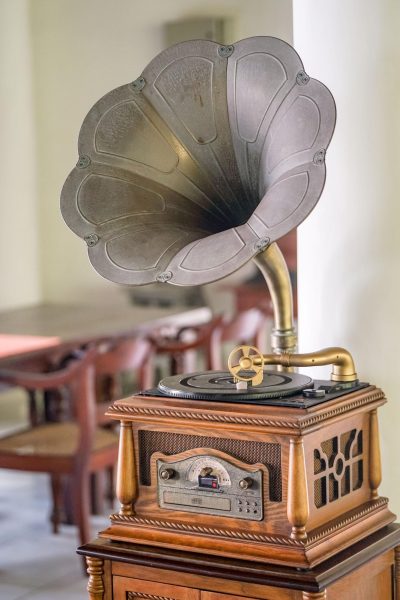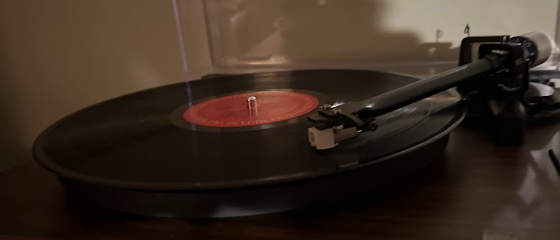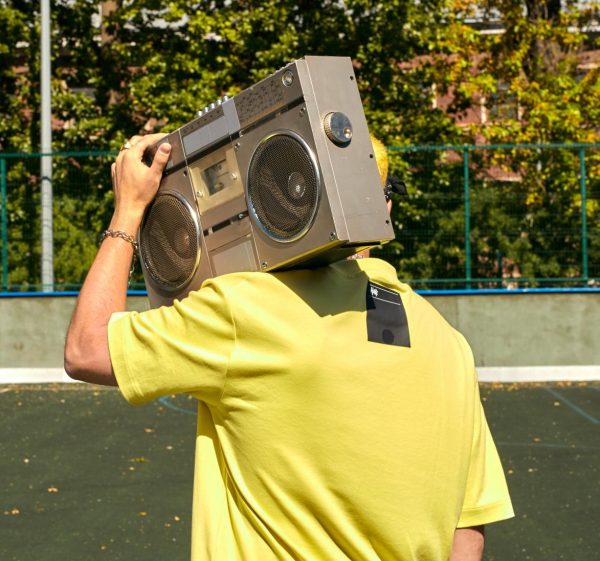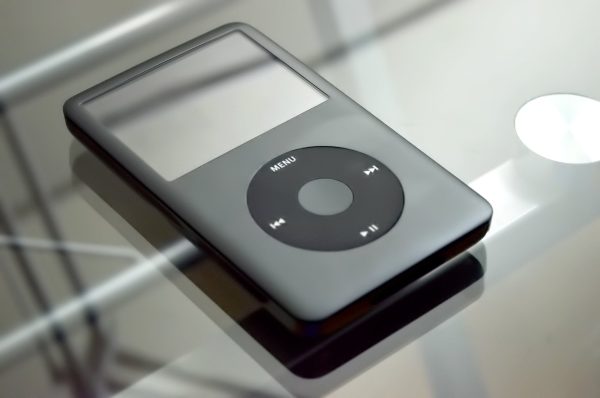With the resurgence of vinyl records, it is clear that music lovers are partial to the ways of the past when it comes to listening to music. Even with streaming services like Spotify and Apple Music becoming the norm, many still choose a good old record every now and then.
What most don’t know is that the vinyl records we know of today are not that old. They first became popular in the 1950’s, which is not that long ago compared to when the music box was first invented in the late 1700’s.
The music box was invented by Antoine Favre-Salomon, a Swiss watchmaker. In 1770, they were available for purchase, and they became the first device that could successfully play music.
The idea first came from an instrument called a carillon. The carillon was a set of at least 23 cast bronze bells which were tuned in chromatic order and were controlled by a keyboard. They worked similarly to a piano, as each bell had a baton that would be released by pressing a key. The baton would then hit the bell, and it would sound.
If you are interested in learning more about the carillon, check out this video about one in Norwood, Massachusetts: https://www.youtube.com/watch?v=fF3Furtn3Bc
Favre-Salomon took this idea and created a brass cylinder with pins on it to resemble the batons and a steel comb with teeth that resembled the bells. When the cylinder rotated, it would pluck the steel teeth and make a tune.
These were popular worldwide until the invention of the phonograph came in 1877. While Thomas Edison was inventing audio transmitters for the telephone, he realized he could use it for playing music as well.
The phonograph was the first machine that could record and play music back. You could speak into the mouthpiece and the needle on it would capture the movements and engrave them on a tinfoil cylinder. These tinfoil cylinders could be inserted back into the machine and the needle on the other side would run through the engravings and play the feedback from the movements of it.

When testing it out, the first song to be recorded and played back would end up to be “Mary Had A Little Lamb” because Edison recorded it for his kids.
A decade later, Edison would produce wax cylinders for the phonograph, which produced a better sound than the tinfoil. In that same year, the gramophone was invented by Emile Berliner.
Taking inspiration from Edison’s phonograph, the gramophone was similar in structure. However, instead of cylinders, it used shellac records. The records worked similarly to the cylinders, with engravings that a needle would read.
The needle for these records was much thicker because the engravings were much thicker. Because of the size of it, only 5 minutes of music could fit on each side. However, this was still monumental in the world of music, as it was the first machine to be widely available for a decent price.
In 1906, the radio was invented by Reginald Fessenden when he sent the first long-distance transmission of human voice and music from his station at Brant Rock, Massachusetts. The signal was received as far away as Norfolk, Virginia, which is about 600 miles away.
This technology was revolutionary as it was the first time information could be broadcasted live to a large group of people at the same time. Now, instead of taking the time to sit down and read a newspaper, Americans could listen to their news while accomplishing other tasks around the house.
There was something for everyone on these shows, such as comedy, family shows, and of course, music. Being in so many households during the 1920’s, radios introduced many people to a variety of genres of music.
A very popular genre at the time, jazz, was heavily influenced by African American musicians, who laid the foundation for civil rights activism. It became very popular with the teenagers and young adults of the 1920’s, leading them to rebel against their parents’ traditional beliefs and culture.
Jazz music changed the ideology of many Americans, which led to civil rights discussions and eventually the end of segregation. Without the radio, these musicians would have never gotten the recognition they deserved, and it may have taken much longer for the civil rights movement to begin.
Jazz led to many other genres of music like blues, swing music, and early versions of rock music. Its influences are also heard in modern day rap and hip-hop. All of these became so popular that many wanted to buy these songs for themselves. Records were still used, but in 1925, they began playing on a brand new electronic record player.
These record players were a much more compact version of the gramophone, with box speakers instead of a trumpet-like speaker. Volume was also able to be adjusted now.

People eventually got tired of the fragility and constant flipping over of shellac records, so in the 1930’s, vinyl records were created. They worked pretty much the same, but they were much more durable and they had microscopic engravings of the music on it.
This microscopic engraving allowed manufacturers to have 21 minutes of music on each side! Now, entire albums could be put onto one record and be sold as one item.
In 1954, William Shockley, John Bardeen, and Walter Brattain invented the transistor radio. This scientific team took war research and applied to create a small portable radio that was able to amplify the radio signals before they were played.
After a while of hauling around huge records to play pre-recorded music, people wanted something more compact. So, in 1962, cassette tapes were invented. Cassette tapes worked by using magnetic tape wound around spools that, when played, would produce music.
The sound is recorded onto them by using a magnetic field that is proportional to the sound waves. The magnetic field is then etched onto the strips that contain iron which reacts to the magnetic field. The tape player then reads the etching and plays the sound.
In 1966, the boombox was created by the Woelfel Brothers. It consisted of two or more loudspeakers and a cassette tape player. More modern versions also included a radio component and played CDs instead. Even some today are Bluetooth only.
It soared in popularity in the 80s with hip-hop and rap artists featuring them in their music videos and performances. There is even a famous scene from the movie Say Anything where the protagonist holds up a boombox playing the song In Your Eyes by Peter Gabriel outside of his romantic interest’s window.
It also quickly became connected to urban life, specifically with African American and Latino youth, because hip-hop and rap artists get their roots from jazz musicians of the 1920’s. Similarly to jazz artists, many rappers used their music to discuss controversial topics and to create waves in social movements.
Cassette tapes were also used in the first portable machine to offer a personal listening experience, the Walkman. First produced by Sony, this device could only be used with headphones as it contained no internal speaker, but one was added to later versions. After their invention in 1982, Walkmans also were able to play CDs instead of cassettes.
The invention of the CD marked the beginning of a digital age of music that we are still very much in today. Bumps of information are inscribed into the CD in a continuous spiral. A laser reflects off these bumps and the changes in light are read and converted into digital data. The CD player uses the digital data to produce the music that is on the disc.
Along with the record, the Walkman was also turned digital. Programmer Tomislav Uzelac invented the first MP3 player in 1998. Everything worked the same as a walkman but it could be so much smaller because instead of having to insert a disc or cassette tape, you downloaded audio files onto it. It was revolutionary in music players because it was the first device that could fit in your pocket.

Similar to the MP3 player, Apple came out with the iPod in 2001. It was the same technology, but the iPod could hold more music and last longer between charges.
And now we reach today, where everything you could ever want is on your phone. With everything being so accessible, many want more out of their music platforms, which is why apps that let listeners choose what songs they listen to have become much more popular than radio-focused apps.
Many people are willing to pay for music services to avoid advertisements, as oftentimes the free version of streaming apps have so many ads between songs to the point where it becomes more commercials than music.
Also, there have been controversies on artists being underpaid by companies even if they make enough to fairly pay them for their songs. In order to compensate, many companies will raise their prices or put more ads between songs, making it unbearable for the consumer.
SiriusXM has also become a popular radio service because it also has no advertisements. There is a subscription fee, of course, but people are willing to pay for uninterrupted listening.
CDs, although increasing in sales by 2.7% in 2023, have become far less popular. Many cars have even gotten rid of built-in CD player technology completely. So if everything is becoming digital and uninterrupted, then why have records become so popular?
During the pandemic, many had time to reflect and look back on their lives. Being forced to stay home without many responsibilities caused people to reminisce of when they were younger. So, returning back to vintage technology like records could be a way to hold onto that feeling.
Now that everything is digital, what will be next in the world of music listening? Hologram concerts? Watching your favorite artist perform through a VR headset? We will have to wait and see what the future has in store for us.





